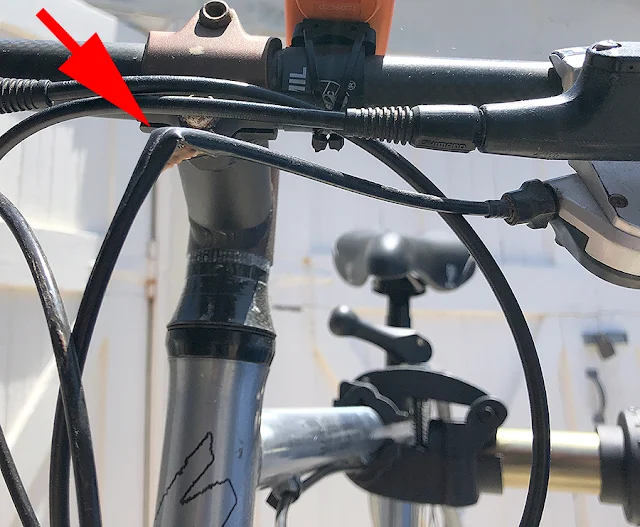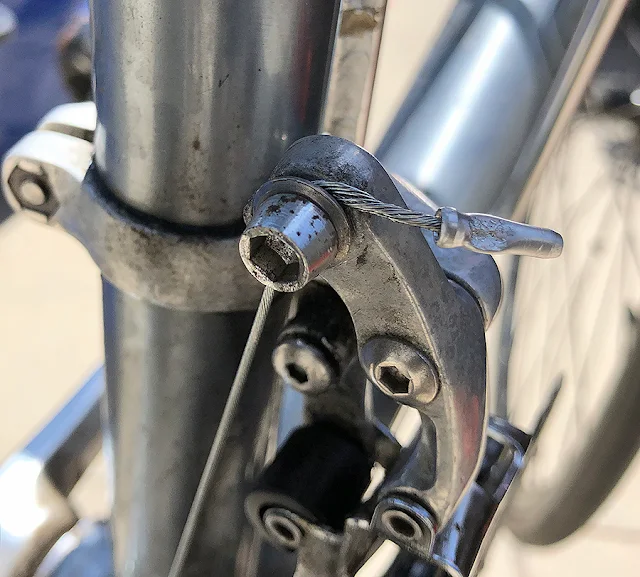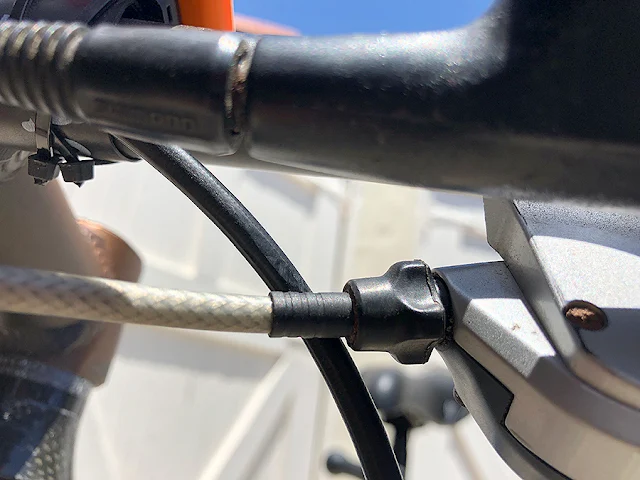 |
| Panorama of about 120 degrees, looking out to the pier then north... |
Wednesday, June 17, 2020
Fixing T's bike's front derailleur cable/housing
 |
| Triple rings. The largest gear is 52 teeth (that's pretty big by today's standards). T usually rides in the middle ring... |
 |
| The rear is a 9 speed setup with an Ultegra derailleur (second to the highest in the Shimano lineup -- only second to the Dura-Ace). |
 |
| Somewhat of an unusual failure... |
 |
| The cable housing is pretty short. It's only about 16 inches(? - didn't measure it...) long and it terminates here near the top of the downtube. |
 |
| The cable keeps going and ends up clamped here at the front derailleur. First thing is to remove the old cable and housing. |
 | |
|
 |
| After cutting off the old cable end, loosen the clamping bolt. |
 |
| The front derailleur cable routes under the bottom-bracket area of the frame through a plastic cable guide. The cable being replaced is the one on the right in this picture. |
 |
| The other end of the shifter cable is inside the shifter mechanism at the handle bar |
 |
| The "thumb" shifter has two levers that are pushed to either go up or down the three front gears (the bigger lever is for going "up" the gears -- moving to the larger rings). |
 |
| To get to the other end of the shifter cable, the three outer screws on the shifter mechanism are removed. Although there's a little bit of corrosion on the screw heads, they came off easily. |
 |
| After removing the screws, the cable end is visible (it's routed through the white plastic part inside). |
 |
| The cable comes through the shifter housing, as seen in this picture. |
 |
| Another picture of the damage to the cable housing... |
 |
| After cutting and deburring. |
 |
| Added the cable housing ends to the new cable housing. |
 |
| This is the other end of the new cable where it will sit in the retainer on the downtube. Here I can use a larger cable housing end that fits easily. |
 |
| While reassembling the front derailleur cable, I noticed that the rear derailleur cable end was missing it's end crimp and was fraying & corroding. Will fix this too... |
 |
| Reinstalled the shifter, new cable housing and cable. Routed it properly and the cable terminates at the cable clamp on the front derailleur. The cable is left extra long initually. |
 |
| After getting things installed and adjusted as well as I can, I cut the new cable to length and installed a cable end cap. |
 |
| I cut the rear derailleur cable and installed a cable end cap. |
 |
| New front derailleur shift cable housing, as installed. Although it's not black, it blends in OK with the silver bike & other silver components. |
 |
| The new cable housing as it sits on the downtube retainer. |
 |
| The bottom adjustment screw is too far "down" and doesn't allow the derailleur to move far enough to engage the big gear. |
 |
| Better picture of the screw end... |
Subscribe to:
Comments (Atom)










